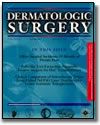Small Volume Fat Transfer

Dermatologic Surgery
1998 Abstract
9808-857 Fulton
Fulton JE, Suarez M, Silverton K, Barnes T.
Small volume fat transfer. Dermatol Surg. 1998 Aug;24(8):857-65. PMID: 9723050
Fulton Skin Clinic, Newport Beach, California 92660, USA.
BACKGROUND:
The use of autologous fat has been advocated for tissue augmentation for over a century. However, this technique remains controversial and many investigators have made suggestions to increase its potential.
OBJECTIVES:
To develop a less traumatic method to collect, purify, and reinject fat to obtain more dramatic augmentations for the cosmetic improvement of contours and tissue defects.
METHODS:
Fat was collected from the donor site following tumescent infiltration of tissue. A “vented” syringe with an atraumatic Mercedes tip was used to collect the fat and, after washing with lactated Ringers or saline, the fat was transferred to small syringes for controlled injections. Small filaments of fat were placed in multi-layers throughout the area of the defect or area of
desired contour change. The unused fat was frozen for a second or third injection session.
RESULTS:
The fat transfer method yielded augmentations of 40%-120% of injected volume in the 339 areas treated. After 45-60 days, the implant was stabilized and remained for the length of our study (up to 10 years). In several cases excessive fat had to be removed. Other than slight bruising, occasional divots at the donor site, and three cases of bacterial infection, the autologous tissue transfer was an uncomplicated event.
CONCLUSION:
Fat grafting has proven to be a safe and effective procedure for correcting and enhancing tissue defects and contour deficiencies.
